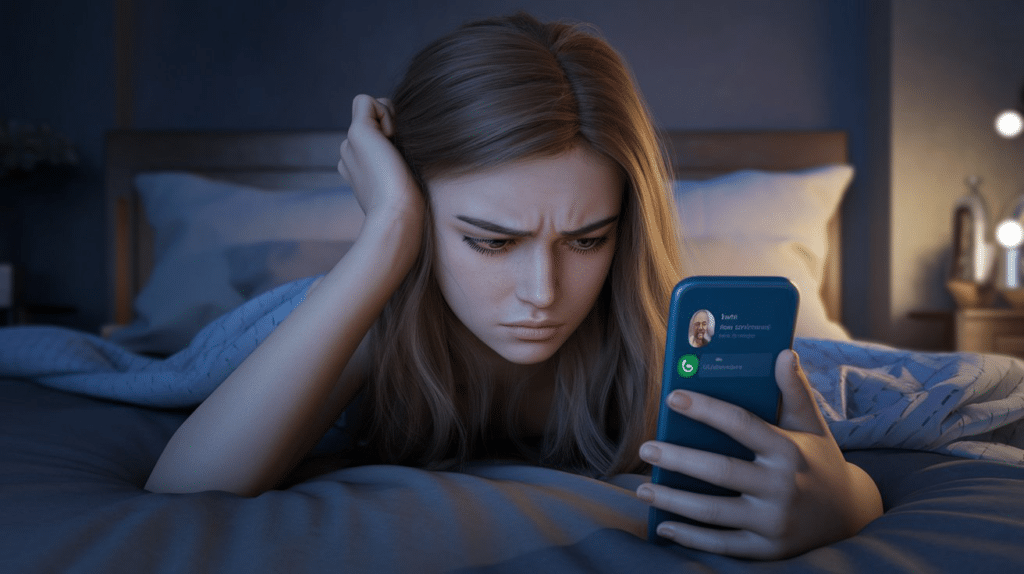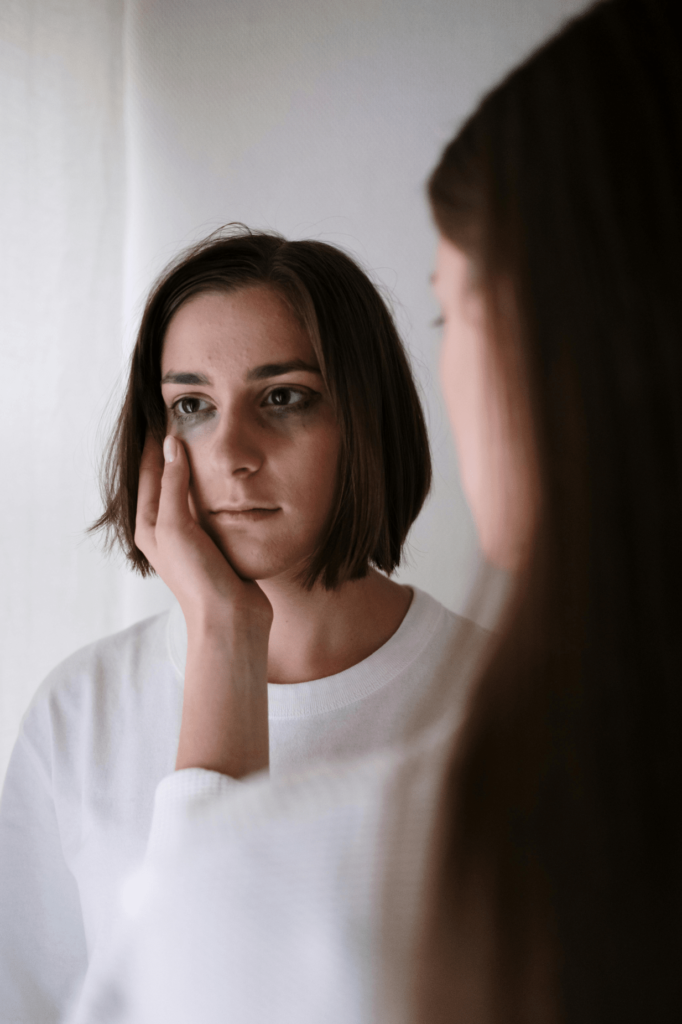Last updated on December 18th, 2024 at 03:18 am
- 1. Understanding YouTube Addiction
- 1.1 The Psychology Behind YouTube Addiction
- 1.2 The Role of Algorithms in Fostering Addiction
- 2. Signs and Symptoms of YouTube Addiction
- 2.1 Behavioral Indicators
- 2.2 Psychological Signs
- 3. The Impact of YouTube Addiction on Mental Health and Well-being
- 3.1 Psychological Effects
- 3.2 Physical Health Consequences
- 4. Underlying Causes of YouTube Addiction
- 4.1 Psychological Factors
- 4.2 Environmental Factors
- 5. Strategies for Overcoming YouTube Addiction
- 5.1 Self-regulation Techniques
- 5.2 Lifestyle Changes
- 5.3 Environmental Modifications
- 6. The Role of Digital Literacy in Preventing YouTube Addiction
- 6.1 Understanding Algorithm Mechanics
- 6.2 Content Evaluation Skills
- 6.3 Digital Wellness Education
- 7. The Future of YouTube and User Well-being
- 7.1 Platform Responsibility
- 7.2 Ethical Algorithm Design
- 7.3 Integration of Wellness Features
- The Impact of YouTube on Impulse Control and Mental Health
- Relationship Between YouTube Addiction and Internet Gaming Disorder
- The Role of Autoplay in the Addictive Cycle
- Content Gratification and Its Addictive Qualities
- Health Risks and Negative Consequences of YouTube Addiction
- Addressing Mental Health Concerns
- Developing Healthier Digital Habits and Strategies for Moderation
- Establishing Offline Activities and Healthier Entertainment Alternatives
- Effective Techniques to Avoid Binge-Watching and Build a Productive Life
- Seeking Professional Advice and Support
- Creating a Structured Routine to Minimize YouTube Usage
- Setting Up Parental Controls and Digital Wellness Tools
- Recognizing and Understanding YouTube Addiction Symptoms
- Exploring the Obsession with Original Series and Entire Seasons
- Diagnostic Criteria for Behavioral Addictions
- Curbing Addiction-Like Behaviors with Structured Entertainment
- Autoplay, the Remote Control, and the Default Choice
- Exploring Technology Addiction and Its Link to YouTube
- Strategies to Prevent YouTube Addiction Relapse
- Setting Boundaries to Manage Content Consumption
- Utilizing Digital Wellbeing Apps for Monitoring Screen Time
- Developing Habits for Life: Transitioning Away from YouTube Dependency
- Content Gratification Versus Real-Life Rewards
- Identifying Triggers for YouTube Binge-Watching
- Balancing Online and Offline Experiences
- Educational Awareness on YouTube Addiction
- Learning About the Role of Dopamine
- Conclusion
- Frequently Asked Questions
- How Does Dopamine Release Affect YouTube Addiction?
- What Strategies Can Help Stop Binge-Watching Entire Series on YouTube?
- How Can Impulse Control Help Reduce YouTube Binge-Watching?
- How Does Autoplay Feature Contribute to YouTube Addiction?
- What Are the Negative Consequences of Spending Excessive Time on YouTube?
- How Can One Identify Triggers That Lead to YouTube Binge-Watching?
- What Is the Role of Dopamine in YouTube Addiction?
- How Can One Develop Healthier Habits to Replace YouTube Binge-Watching?
- How Does YouTube Addiction Affect Real-Life Relationships?
- How Can Mindfulness Help Reduce Compulsive Video Watching Habits?
- What Are the Diagnostic Criteria for YouTube Addiction?
- How Can Parents Set Up Controls to Limit YouTube Access?
- What Are the Consequences of Addiction to Original Series on YouTube?
- How Can Technology Addiction Be Addressed Through Professional Help?
- How Do Algorithms Promote Binge-Watching on YouTube?
- How Can One Recognize Signs of YouTube Addiction?
- What Are Some Effective Methods to Limit YouTube Viewing?
- How Does YouTube Binge-Watching Affect Mental Health?
- How Can One Create a Balanced Routine to Minimize YouTube Usage?
- What Are the Psychological Effects of YouTube Addiction?
- How Can Engaging in Social Activities Divert Attention From YouTube?
In today’s digital age, YouTube has become an integral part of our daily lives, offering a vast array of content ranging from educational videos to entertainment. However, the platform’s engaging nature can sometimes lead to excessive use, potentially developing into problematic behavior.
This article explores the concept of YouTube addiction, its signs and symptoms, underlying causes, and potential impacts on mental health and well-being. We’ll also discuss strategies to regain control over YouTube consumption and maintain a healthy balance in the digital world.
1. Understanding YouTube Addiction
YouTube addiction, while not officially recognized as a clinical disorder, refers to the compulsive and excessive use of the video-sharing platform. This behavior pattern can significantly interfere with daily life, relationships, and overall well-being. The addictive nature of YouTube stems from its ability to fulfill various psychological needs, including entertainment, information-seeking, social connection, and escapism.
1.1 The Psychology Behind YouTube Addiction
Several psychological factors contribute to the addictive potential of YouTube:
- Variable Reward System: The unpredictable nature of video content keeps users engaged, as they never know when they’ll stumble upon something particularly interesting or rewarding.
- Cognitive Overload: The endless stream of content can overwhelm the brain, making it difficult to disengage.
- Dopamine Release: Watching engaging videos triggers the release of dopamine, a neurotransmitter associated with pleasure and reward.
- Escapism: YouTube can serve as a distraction from real-world problems or emotional distress.
1.2 The Role of Algorithms in Fostering Addiction
YouTube’s sophisticated recommendation algorithm plays a crucial role in keeping users engaged. By analyzing viewing history, search patterns, and user interactions, the algorithm creates a personalized content feed that continuously suggests videos aligned with the user’s interests. This tailored experience can lead to prolonged viewing sessions and increased platform dependency.
2. Signs and Symptoms of YouTube Addiction
Identifying YouTube addiction can be challenging, as the line between healthy and problematic use is often blurred. However, several key indicators may suggest an unhealthy relationship with the platform:
2.1 Behavioral Indicators
- Loss of Time Control: Spending significantly more time on YouTube than intended.
- Neglect of Responsibilities: Prioritizing YouTube over work, school, or personal obligations.
- Sleep Deprivation: Staying up late to watch videos, resulting in inadequate sleep.
- Social Isolation: Withdrawing from real-world social interactions in favor of YouTube content.
2.2 Psychological Signs
- Preoccupation: Constantly thinking about YouTube or planning the next viewing session.
- Mood Regulation: Using YouTube as a primary means of managing emotions or stress.
- Withdrawal Symptoms: Experiencing irritability or anxiety when unable to access YouTube.
- Loss of Interest: Declining interest in previously enjoyed activities outside of YouTube.


3. The Impact of YouTube Addiction on Mental Health and Well-being
Excessive YouTube use can have far-reaching consequences on an individual’s mental health and overall quality of life:
3.1 Psychological Effects
- Increased Anxiety: Constant exposure to stimulating content can elevate anxiety levels.
- Depression: Excessive use may contribute to or exacerbate depressive symptoms.
- Low Self-esteem: Comparing oneself to content creators or other viewers can negatively impact self-image.
- Attention Deficits: Prolonged YouTube use may decrease attention span and focus in other areas of life.
3.2 Physical Health Consequences
- Sedentary Lifestyle: Excessive screen time can lead to decreased physical activity and associated health risks.
- Eye Strain: Prolonged viewing can cause digital eye strain and related symptoms.
- Poor Posture: Extended periods of sitting and watching videos may contribute to musculoskeletal issues.
- Disrupted Sleep Patterns: Late-night YouTube sessions can interfere with natural sleep-wake cycles.
4. Underlying Causes of YouTube Addiction
Understanding the root causes of YouTube addiction is crucial for developing effective strategies to address the issue:
4.1 Psychological Factors
- Loneliness and Social Isolation: YouTube may serve as a substitute for real-world social connections.
- Low Self-esteem: Individuals may seek validation or escape through YouTube content.
- Stress and Anxiety: YouTube can be used as a coping mechanism for managing difficult emotions.
- Boredom: A lack of engaging activities in daily life may lead to excessive YouTube use.
4.2 Environmental Factors
- Easy Accessibility: The ubiquity of smartphones and high-speed internet makes YouTube readily available.
- Social Norms: The normalization of constant media consumption in society can contribute to excessive use.
- Lack of Alternative Activities: Limited access to other forms of entertainment or stimulation may increase reliance on YouTube.


5. Strategies for Overcoming YouTube Addiction
Breaking free from YouTube addiction requires a multifaceted approach that addresses both the behavioral and psychological aspects of the issue:
5.1 Self-regulation Techniques
- Set Time Limits: Establish specific time slots for YouTube use and adhere to them strictly.
- Use Digital Wellbeing Tools: Leverage built-in smartphone features or third-party apps to monitor and limit screen time.
- Practice Mindful Consumption: Be intentional about the content you watch and its value to your life.
- Implement the “5-Minute Rule”: Before watching a video, wait five minutes to assess if it’s truly necessary or valuable.
5.2 Lifestyle Changes
- Develop Offline Hobbies: Engage in activities that don’t involve screens, such as reading, sports, or crafts.
- Strengthen Real-world Relationships: Prioritize face-to-face interactions with friends and family.
- Create a Balanced Daily Routine: Structure your day to include a mix of work, leisure, and social activities.
- Practice Stress-management Techniques: Learn and apply stress-reduction methods like meditation or deep breathing exercises.
5.3 Environmental Modifications
- Designate “YouTube-free” Zones: Establish areas in your home where YouTube use is not allowed, such as the bedroom or dining room.
- Remove YouTube Shortcuts: Uninstall the YouTube app from your devices or remove easy-access shortcuts.
- Use Website Blockers: Employ browser extensions or apps that restrict access to YouTube during certain hours.
6. The Role of Digital Literacy in Preventing YouTube Addiction
Enhancing digital literacy skills can play a crucial role in fostering a healthier relationship with YouTube and other online platforms:
6.1 Understanding Algorithm Mechanics
Educating users about how YouTube’s recommendation algorithm works can help them make more informed decisions about their viewing habits. By recognizing the platform’s tactics for keeping users engaged, individuals can develop a more critical approach to content consumption.


6.2 Content Evaluation Skills
Developing the ability to critically evaluate YouTube content is essential for maintaining a balanced perspective. This includes:
- Verifying information sources and credibility
- Recognizing bias and misinformation
- Understanding the difference between educational and purely entertainment-based content
6.3 Digital Wellness Education
Incorporating digital wellness concepts into educational curricula can help individuals develop healthy online habits from an early age. This may include:
- Teaching time management skills for online activities
- Promoting awareness of the potential negative impacts of excessive screen time
- Encouraging a balanced approach to technology use
7. The Future of YouTube and User Well-being
As concerns about digital addiction continue to grow, it’s important to consider the potential evolution of YouTube and its impact on user well-being:
7.1 Platform Responsibility
There is increasing pressure on YouTube and other social media platforms to take greater responsibility for user well-being. This may lead to the development of more robust built-in tools for managing screen time and content consumption.
7.2 Ethical Algorithm Design
Future iterations of YouTube’s recommendation algorithm may prioritize user well-being alongside engagement metrics. This could involve promoting a more diverse range of content and avoiding the creation of “echo chambers” that reinforce addictive behaviors.
7.3 Integration of Wellness Features
YouTube may increasingly incorporate features designed to promote digital wellness, such as:
- More prominent break reminders
- Customizable content filters
- Improved parental control options
- Integration with digital wellness apps and platforms


The Impact of YouTube on Impulse Control and Mental Health
YouTube addiction can significantly impair impulse control. This lack of control often mirrors other behavioral addictions, making it difficult for individuals to disengage even when they recognize the negative consequences.
The addictive qualities of YouTube, driven by the release of dopamine, contribute to a cycle of compulsive behaviors and the loss of control. These patterns are similar to other types of addictions that affect an individual’s mental well-being.
Relationship Between YouTube Addiction and Internet Gaming Disorder
The American Society of Addiction Medicine highlights the connection between YouTube addiction and internet addiction disorder, which also includes internet gaming disorder. Both conditions share similar patterns of addictive behaviors, characterized by an inability to regulate screen time.
Engaging in extended YouTube viewing, much like gaming, can affect mental health and reduce impulse control. These behaviors can resemble those seen in mental disorders and may require professional help.
The Role of Autoplay in the Addictive Cycle
The autoplay feature is a major contributor to prolonged YouTube consumption. It acts as a trigger, encouraging binge-watching without conscious decision-making.
This addictive cycle is perpetuated when the autoplay option becomes the default choice. Disabling autoplay can help regain control over time spent on YouTube and reduce binge-watching tendencies.
Content Gratification and Its Addictive Qualities
Content gratification, or the immediate satisfaction provided by engaging content, contributes heavily to the obsession of series and other YouTube offerings. Watching entire series or original content provides an instant release of dopamine, creating an urge to continue.
This pleasure from consuming content can become akin to addiction-like behaviors, causing viewers to lose track of time. To overcome YouTube addiction, understanding this gratification is crucial for better decision-making.
Health Risks and Negative Consequences of YouTube Addiction
YouTube addiction has far-reaching effects on both physical and mental health. Excessive time spent watching videos can lead to a sedentary lifestyle, a significant health concern.
The negative consequences include poor posture, eye strain, and disrupted sleep cycles due to staying up late instead of going to bed on time. Managing excessive YouTube usage is key to preventing these health impacts.


Addressing Mental Health Concerns
The release of endorphins from watching YouTube videos provides a temporary sense of pleasure. However, excessive consumption can lead to negative mental health outcomes such as increased anxiety and depression.
Seeking support from a mental health professional or engaging in healthier habits is crucial for those showing YouTube addiction symptoms. Services like Ria Health offer access to health care professionals for support.
Developing Healthier Digital Habits and Strategies for Moderation
Breaking the cycle of endless video consumption involves cultivating new digital habits and adopting digital detox strategies. Setting boundaries for YouTube consumption can significantly help in overcoming excessive use.
Practicing self-discipline, such as limiting viewing to a single episode per day, is an effective method. Creating a schedule to manage YouTube viewing habits also helps in reducing the compulsion to watch videos for hours.
Establishing Offline Activities and Healthier Entertainment Alternatives
Finding balance between online and offline activities is essential for managing time spent on YouTube effectively. Engaging in hobbies, such as reading or crafts, helps reduce dependency on online video platforms.
Spending time engaging in real-life pleasures, like being active or learning a new skill, can help break the addictive cycle. Offline activities provide a healthy substitute, contributing to a more balanced life.


Effective Techniques to Avoid Binge-Watching and Build a Productive Life
Techniques to avoid YouTube binge sessions include setting personal goals to decrease YouTube usage. Practicing mindfulness can also help reduce excessive watching habits.
Recognizing triggers like boredom or stress is essential for preventing binge-watching. Stress management techniques, like meditation, help avoid reliance on YouTube as a coping mechanism.
Seeking Professional Advice and Support
For severe cases of YouTube addiction, seeking professional advice is practical. Health care professionals can offer targeted strategies to address the obsession with YouTube.
Support groups for individuals struggling with YouTube addiction provide emotional assistance. Finding YouTube addiction help through professionals and support groups can create a structured recovery plan.
Creating a Structured Routine to Minimize YouTube Usage
Creating a balanced routine is a key strategy to minimize YouTube usage and prevent addiction relapse. Structuring the day with planned offline activities helps break the dependency on the platform.
Establishing a YouTube-free time during the day and sticking to it can build a productive life. Scheduling physical activities or social engagements can help eliminate the constant lure of binge-watching.


Setting Up Parental Controls and Digital Wellness Tools
For younger users, setting up parental controls to limit YouTube access can mitigate the risks of excessive consumption. Utilizing apps to monitor and limit YouTube screen time establishes better control over usage.
Educating oneself about the algorithms that promote binge-watching on YouTube is also essential. Digital wellness tools can create a supportive environment to combat overuse and encourage healthier viewing habits.
Recognizing and Understanding YouTube Addiction Symptoms
Recognizing signs of YouTube addiction is the first step in overcoming the issue. Common symptoms include spending excessive time on the platform and feeling anxious when unable to watch.
Understanding the psychological effects of YouTube addiction can motivate individuals to adopt healthier habits. Taking practical steps towards recovery helps in building a more balanced lifestyle.
Exploring the Obsession with Original Series and Entire Seasons
The obsession with original series and watching entire seasons can lead individuals into a rabbit hole of content. Such binge-watching behaviors, like Walter White’s story in Breaking Bad, can waste precious time that could be spent on productive activities.
The constant availability of new content encourages viewers to stay connected. This reduces opportunities for healthier offline engagements, contributing to addiction-like behaviors.
Diagnostic Criteria for Behavioral Addictions
Behavioral addictions, including YouTube addiction, have diagnostic criteria similar to other impulse control disorders. The inability to stop watching entire series or seasons and the loss of control are indicators of addiction.
Understanding these criteria is vital for addressing addiction-like behaviors and seeking support. Professional guidance can help manage these compulsive tendencies and promote recovery.
Curbing Addiction-Like Behaviors with Structured Entertainment
To break free from the cycle of watching entire series, individuals should adopt healthier entertainment alternatives. Enjoying offline activities or limiting content gratification can help reduce dependency on YouTube.
Reducing the number of episodes watched per day can also curb the urge to watch continuously. This can assist in developing a more balanced life and prevent late-night binge-watching.


Autoplay, the Remote Control, and the Default Choice
The autoplay option acts like a remote control, making the default choice to keep watching. This passive consumption reinforces technology addiction.
Disabling autoplay and setting limits on content can help overcome the habit of watching YouTube for hours. Practicing mindful engagement by selecting a single episode also contributes to healthier viewing habits.
Exploring Technology Addiction and Its Link to YouTube
Technology addiction, including YouTube and other digital media, often leads to excessive time online. Addiction to movies, streaming services, and continuous watching can make YouTube a significant part of daily life.
Addressing technology addiction requires adopting healthier habits. Spending time away from screens and seeking face-to-face social interactions are effective steps to overcome dependency.
Strategies to Prevent YouTube Addiction Relapse
Overcoming YouTube addiction requires ongoing strategies to prevent relapse. Creating a supportive environment and setting a structured schedule helps manage YouTube usage.
Techniques like digital detox and establishing offline interests are key in avoiding relapse. Building a productive and balanced lifestyle is essential to maintain long-term recovery.
Setting Boundaries to Manage Content Consumption
Managing time spent on YouTube effectively includes establishing clear boundaries. Creating a YouTube-free time during specific hours helps control viewing habits.
Such boundaries not only help in managing addiction but also contribute to developing healthier digital habits. This approach ensures a balance between online consumption and offline activities.
Utilizing Digital Wellbeing Apps for Monitoring Screen Time
Using apps to monitor and limit YouTube screen time is a practical way to reduce dependency. These tools offer insights into viewing patterns and create awareness about screen time.
Digital wellbeing apps help control compulsive behaviors and manage YouTube overuse. Establishing conscious control over viewing helps foster healthier habits.
Developing Habits for Life: Transitioning Away from YouTube Dependency
Transitioning away from YouTube dependency involves developing lasting habits for a balanced routine. Learning stress management techniques can help avoid using YouTube as a distraction.
Exploring hobbies to replace YouTube viewing time can reduce the time spent on digital screens. Developing these habits promotes a healthier and more active lifestyle.


Content Gratification Versus Real-Life Rewards
The gratification derived from YouTube content can waste time compared to the real-life rewards of engaging offline. Developing a plan to gradually reduce YouTube viewing allows individuals to appreciate offline experiences.
Spending time on rewarding offline activities helps manage time more effectively. This reduces the appeal of binge-watching sessions, leading to a more productive life.
Identifying Triggers for YouTube Binge-Watching
Identifying and avoiding content that triggers binge-watching is key in managing YouTube usage. Boredom is a common trigger that can lead to binge-watching, making it essential to find healthier alternatives.
Understanding the impact of YouTube addiction on mental health can help recognize cues that lead to excessive watching. Working towards building a productive routine is essential for recovery.
Balancing Online and Offline Experiences
Balancing online and offline activities is essential for preventing YouTube addiction. Engaging in physical activities, social interactions, or pursuing hobbies helps create a buffer against technology addiction.
Establishing a balanced life with both online and offline engagements maintains autonomy over media consumption. This prevents the negative consequences of excessive YouTube use.
Educational Awareness on YouTube Addiction
Educational awareness about the consequences of prolonged YouTube watching can help curb compulsive viewing. Understanding the role of dopamine in YouTube addiction is crucial for managing screen time.
Incorporating these lessons into daily practices helps develop a healthier relationship with digital content. Younger users can especially benefit from these strategies to prevent overuse.
Learning About the Role of Dopamine
The release of dopamine during YouTube consumption plays a key role in the addictive process. This neurotransmitter creates a sense of pleasure that encourages repeated behavior.
Educating oneself about dopamine’s role in YouTube addiction can motivate individuals to seek effective methods to limit screen time. Pursuing healthier entertainment options helps in breaking the addiction cycle.


Conclusion
YouTube addiction is a complex issue that reflects the broader challenges of maintaining a healthy relationship with technology in the digital age. By understanding the psychological mechanisms behind excessive YouTube use, recognizing the signs of problematic behavior, and implementing effective strategies for moderation, individuals can regain control over their digital habits and foster a more balanced approach to online content consumption.
As society continues to grapple with the implications of pervasive technology use, it’s crucial to prioritize digital literacy and well-being education. By empowering users with the knowledge and skills to navigate the online world mindfully, we can work towards a future where platforms like YouTube enhance our lives without compromising our mental health and overall well-being.
Ultimately, the goal is not to demonize YouTube or completely abstain from its use, but rather to cultivate a thoughtful and intentional approach to digital media consumption. By striking a balance between the benefits of online content and the importance of offline experiences, we can harness the power of platforms like YouTube while maintaining our autonomy and well-being in an increasingly digital world.
From Embrace Inner Chaos to your inbox
Transform your Chaos into authentic personal growth – sign up for our free weekly newsletter! Stay informed on the latest research advancements covering:
Narcissistic Personality Disorder (NPD)
Frequently Asked Questions
How Does Dopamine Release Affect YouTube Addiction?
The release of dopamine is a significant factor in YouTube addiction. When someone watches a new, interesting video, their brain releases dopamine, a chemical associated with pleasure and reward.
This sensation encourages individuals to continue watching, which can lead to a repeated cycle of consumption. Platforms like YouTube capitalize on this reward system by recommending more videos, making it difficult for users to resist watching more content. The American Society of Addiction Medicine explains how this reward mechanism contributes to behavioral addictions, including YouTube binge-watching.
What Strategies Can Help Stop Binge-Watching Entire Series on YouTube?
Breaking the cycle of binge-watching entire series on YouTube requires deliberate strategies. Setting time limits for watching videos and using browser extensions to disable the autoplay feature can be effective.
By taking control of the impulse to let the next video play, individuals can disrupt the addictive cycle. The Ria Health suggests turning to offline activities, like exercising or reading, to reduce dependency on online video platforms. Engaging in offline hobbies helps in breaking the continuous urge to watch entire seasons.
How Can Impulse Control Help Reduce YouTube Binge-Watching?
Impulse control is crucial for managing excessive YouTube usage. Learning to resist the temptation of instant gratification from watching the next video can limit binge-watching tendencies.
Impulse control techniques, such as pausing to assess whether continuing to watch serves a productive purpose, are helpful. A mental health professional can also guide users to identify triggers that lead to binge-watching and provide coping mechanisms. Developing a habit of watching a single episode and then taking a break is a practical way to cultivate impulse control.
How Does Autoplay Feature Contribute to YouTube Addiction?
The autoplay feature on YouTube plays a significant role in encouraging binge-watching by automatically queuing the next video. This default choice makes it easy for users to lose track of time and continue watching without conscious decision-making.
Disabling the autoplay feature is a straightforward step to combat this behavior. According to Cleveland Clinic, users need to become mindful of how such automated settings influence their digital habits and take active steps to regain control over their viewing time.
What Are the Negative Consequences of Spending Excessive Time on YouTube?
Spending excessive time on YouTube can lead to several negative consequences. It can cause mental fatigue, impact real-life relationships, and contribute to internet addiction disorder.
Moreover, binge-watching for long hours can disrupt sleep patterns, making it difficult for users to get to bed on time. The National Institute on Drug Abuse warns that individuals may also experience behavioral addictions akin to other types of addictions, which affect both mental and physical health negatively.
How Can One Identify Triggers That Lead to YouTube Binge-Watching?
Identifying triggers is essential for managing YouTube overuse. Triggers can include boredom, stress, or even curiosity about a recommended video.
By becoming aware of these triggers, individuals can work on avoiding them or substituting YouTube with healthier alternatives. Mayo Clinic suggests keeping a journal to note when binge-watching occurs and the emotions or events that led to it, which can help in recognizing patterns and addressing them effectively.
What Is the Role of Dopamine in YouTube Addiction?
Dopamine plays a critical role in fostering YouTube addiction. Every time someone watches a video that they find amusing or informative, a release of dopamine occurs, reinforcing the behavior.
This creates a cycle where individuals seek the same release of pleasure repeatedly, leading to an addictive pattern. According to Harvard Health, understanding the impact of dopamine on digital habits is a crucial first step in managing and overcoming the urge to watch YouTube compulsively.


How Can One Develop Healthier Habits to Replace YouTube Binge-Watching?
Developing healthier habits is key to overcoming YouTube addiction. Individuals can explore activities such as exercising, reading, or spending time in nature to fill the gap left by reduced screen time.
Engaging in offline activities not only helps break the addictive cycle but also contributes to a more balanced life. The Centers for Disease Control and Prevention (CDC) recommends creating a schedule that includes activities that boost both mental and physical health as a method of replacing harmful digital habits.
How Does YouTube Addiction Affect Real-Life Relationships?
YouTube addiction can significantly affect real-life relationships by taking time away from personal interactions. Spending excessive hours in front of a screen may lead to social isolation and decreased quality time with family and friends.
This could eventually result in strained relationships and feelings of loneliness. The American Psychological Association highlights how behavioral addictions, such as technology addiction, can erode interpersonal connections and affect emotional well-being.
How Can Mindfulness Help Reduce Compulsive Video Watching Habits?
Practicing mindfulness can be a powerful tool for reducing compulsive video-watching habits. Mindfulness involves being present in the moment and making conscious decisions about how to spend one’s time.
When individuals learn to notice their urges to watch YouTube without acting on them, they gain more control over their behaviors. According to Mindful.org, mindfulness exercises, such as deep breathing and reflection, can help individuals break the cycle of addiction-like behaviors by allowing them to recognize their digital habits without judgment.
What Are the Diagnostic Criteria for YouTube Addiction?
The diagnostic criteria for YouTube addiction are similar to those for other behavioral addictions. Symptoms include a loss of control over video-watching habits, continued use despite negative consequences, and experiencing distress when trying to cut back.
These behaviors may also align with internet addiction disorder, which involves compulsive engagement with online activities. WebMD outlines how healthcare professionals assess these behaviors based on their severity and impact on daily life, using established guidelines for behavioral disorders.
How Can Parents Set Up Controls to Limit YouTube Access?
Parents can set up parental controls to limit YouTube access and prevent excessive screen time among children. Utilizing tools like YouTube Kids or installing apps that help regulate screen time can be effective in setting boundaries.
Additionally, discussing the importance of balanced online and offline activities with children helps them understand the potential risks of overuse. The Child Mind Institute emphasizes educating children about the effects of internet addiction and involving them in creating a healthy media usage plan.
What Are the Consequences of Addiction to Original Series on YouTube?
Addiction to original series on YouTube can have similar consequences to binge-watching television shows, including impaired impulse control, sleep deprivation, and neglect of responsibilities. The compelling storytelling of original content encourages viewers to watch episode after episode, leading to a lack of productivity.
The Sleep Foundation warns that prolonged exposure to screens late at night can affect one’s ability to get sufficient sleep, impacting both mental and physical health. Sleep deprivation not only affects productivity but also has long-term consequences on overall well-being.
How Can Technology Addiction Be Addressed Through Professional Help?
Technology addiction, including YouTube overuse, may require intervention from healthcare professionals if self-help strategies do not work. Therapy approaches, such as cognitive behavioral therapy (CBT), can help individuals understand the root causes of their addiction and develop healthier coping mechanisms.
The National Alliance on Mental Illness (NAMI) states that consulting a mental health professional is often necessary when individuals are unable to control their behavior and it significantly impacts their quality of life. Professional help can provide structured support and individualized strategies for recovery.
How Do Algorithms Promote Binge-Watching on YouTube?
YouTube’s algorithms are designed to promote binge-watching by suggesting content based on a user’s viewing history and preferences. This recommendation system leverages machine learning to keep viewers engaged for as long as possible by presenting videos that are likely to capture their attention.
MIT Technology Review explains how these algorithms encourage users to stay on the platform, thereby creating a cycle of content consumption that is challenging to break without deliberate effort. Understanding how these algorithms work can empower users to take control of their viewing habits.
How Can One Recognize Signs of YouTube Addiction?
Recognizing signs of YouTube addiction involves observing one’s behavior regarding video consumption. Symptoms may include prioritizing YouTube over other responsibilities, feeling anxious when unable to watch, and spending more time watching than initially intended.
The World Health Organization (WHO) notes that when these behaviors start interfering with daily activities, it may indicate an addiction. Understanding these signs is the first step toward acknowledging the problem and seeking the right interventions.
What Are Some Effective Methods to Limit YouTube Viewing?
Effective methods to limit YouTube viewing include setting daily time limits, turning off notifications, and using apps to track screen time. These methods help individuals become more mindful of the time spent on the platform and take necessary actions to cut down on usage.
The Pew Research Center suggests scheduling specific times for watching YouTube and sticking to those limits as a means to prevent the habit from becoming a compulsive behavior. Setting boundaries helps individuals regain control over their digital habits.
How Does YouTube Binge-Watching Affect Mental Health?
YouTube binge-watching can have adverse effects on mental health, including increased anxiety, depression, and sleep disturbances. Prolonged screen time can lead to social isolation, which, in turn, impacts one’s emotional well-being.
The National Institute of Mental Health (NIMH) points out that individuals who engage in binge-watching often experience a sense of guilt or dissatisfaction afterward, which can contribute to a cycle of negative feelings and compulsive viewing. Breaking this cycle is crucial for maintaining mental health.
How Can One Create a Balanced Routine to Minimize YouTube Usage?
Creating a balanced routine involves incorporating a variety of activities that provide both productivity and enjoyment outside of YouTube. Setting personal goals, such as reading a book, spending time with family, or engaging in a hobby, can help reduce screen time.
Johns Hopkins Medicine advises building a daily schedule that includes exercise, social interactions, and creative activities as effective measures to prevent excessive YouTube usage and promote a healthier lifestyle. Balance is key to overcoming addictive behaviors.
What Are the Psychological Effects of YouTube Addiction?
The psychological effects of YouTube addiction include an increase in stress, anxiety, and a decline in self-esteem. The constant need to stay updated with content may lead individuals to compare themselves to others, thereby causing negative self-assessment.
According to Stanford Medicine, the pressure to watch trending videos or entire series can also lead to a fear of missing out (FOMO), which exacerbates stress and impairs overall mental health. Addressing these psychological impacts is essential for well-being.
How Can Engaging in Social Activities Divert Attention From YouTube?
Engaging in social activities can effectively divert attention from YouTube and help break the habit of binge-watching. Participating in group activities or spending time with friends can fulfill the need for connection and entertainment, which many people seek from online videos.
The American Heart Association (AHA) emphasizes the importance of face-to-face interactions for mental well-being and recommends spending more time in social settings to reduce dependency on digital platforms. Social interactions are vital for a balanced, healthy lifestyle.



